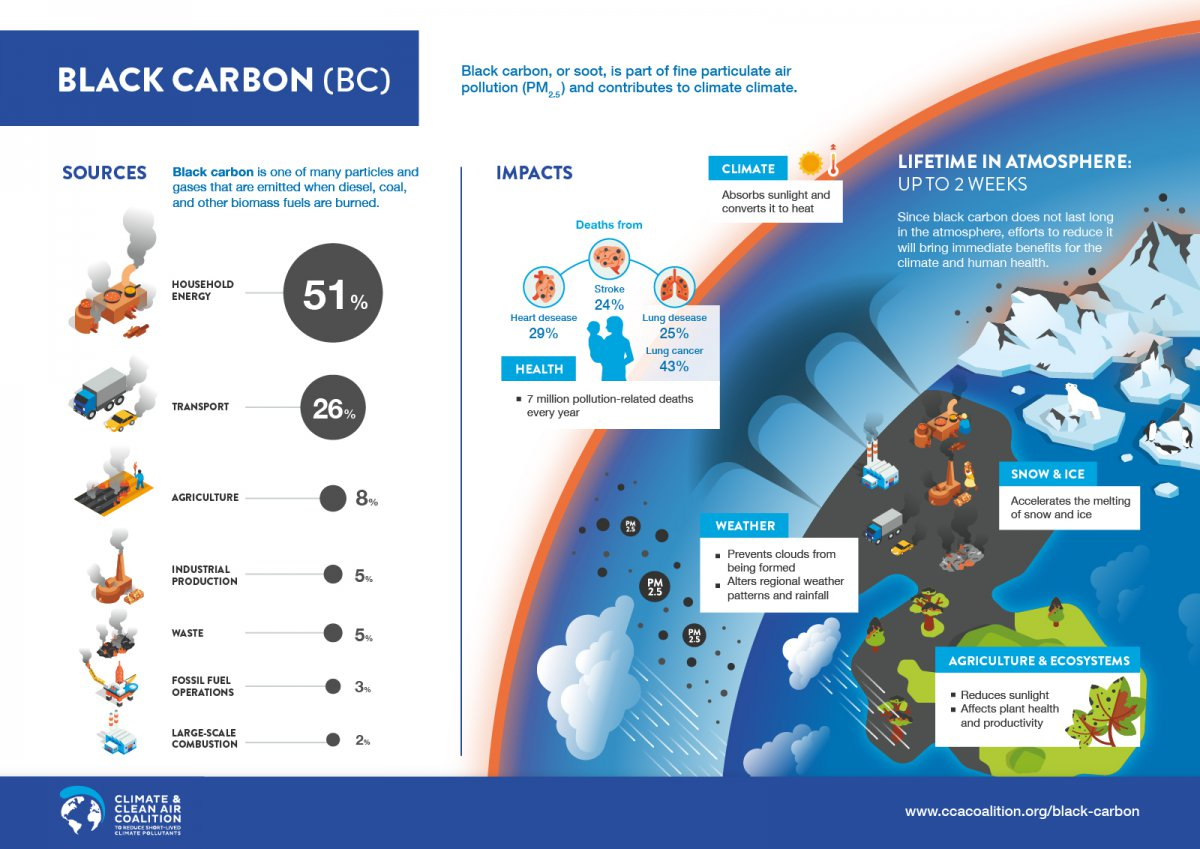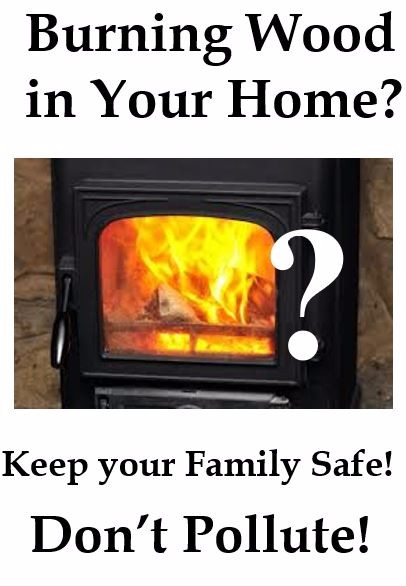PM2.5: What we should all know
What is it?
Particulate matter (PM) is one of the most concerning pollutants to human health. Of all PM, widely recognized as the most dangerous is PM 2.5--that is, of a size 1/30 the diameter of a human hair. This pollutant is so tiny, it easily enters lungs and bloodstream, causing and exacerbating health effects such as respiratory illnesses such as asthma/COPD, heart attacks and strokes, dementia, SIDS, cancer, premature death, and genetic alteration that affects the immune system, perhaps permanently. Premature deaths have been shown to occur on the very day of exposure to PM 2.5, even at currently-set governmental levels. These particles cannot be coughed or sneezed out, as larger particles can be, and evidence shows that even very small increases in the level of exposure to PM 2.5 leads to much higher death rates in people who have contracted COVID-19 (Wu et al., 2020).
The American Lung Association outlines the health risks of both short and long-term exposure to PM 2.5. They make the point that many studies show that even at current exposure levels set by the EPA serious health effects and premature death are shown to occur. Click here to read more.
Where does it come from?
Sources of PM 2.5 in outdoor air originate from the combustion of gasoline, oil, diesel fuel, and wood. These sources include vehicle exhaust and the burning of fuels for heat. Indoor PM 2.5 can also occur from cooking, burning candles, and fireplaces, and wood or pellet stoves. The latter also contribute to outdoor PM 2.5.
Burning wood is one of the dirtiest ways to heat your home. A study conducted by the United States EPA estimated that a single wood heater emits more PM 2.5 per year than 700 cars.

Based on data gathered from the U.S. Energy Information Administration, it was estimated that 1,573.63 tons of wood was used as fuel in the City of Kingston in 2010. This created 193 tonnes of CO2e in addition to PM 2.5 emissions.
The EPA’s National Emissions Inventory for 2014 compares PM 2.5 emissions in Ulster County from automobiles, trucks, and residential wood burning as follows, “on-road light duty, non-diesel cars: 37.7 tons, on-road, heavy-duty diesel: 28.9 tons, residential heating: wood-burning: 554.314 tons.”
Vehicle idling is another significant contributor to PM2.5, heavy duty diesel vehicles being the worst offenders.
NYS currently has a heavy duty vehicle anti-idling law, NYS Environmental Conservation Law, 6 NYCRR, Subpart 217-3, which prohibits heavy duty vehicles, including non-diesel and diesel trucks and buses with a gross vehicle weight rating of more than 8,500 pounds, from idling for more than five minutes at a time. The idling regulation is enforced by DEC Conservation Officers.
The City of Kingston is working on the development of a Green Fleet Policy, to stipulate a strategy and policy for a transition to an alternative fuel governmental fleet, which would also incorporate additional anti-idling policies for the government fleet and perhaps the community as a whole. The City has already incorporated more than a dozen hybrid or electric vehicles into our fleet. Additionally, the City and County have prioritized supporting the transition to EV technology with the installation of public EV charging stations around the City. Locations for EV parking in the City of Kingston include:
Ulster County Office Building
Ulster County Courthouse
Ulster County Restorative Justice Center
Cornell Street Lot
Garraghan Drive Lot
Dock Street Lot
Lower Broadway Lot at Strand
Current regulations do not accurately characterize the risks to human health presented by elevated levels of PM 2.5 in ambient air. National strategies have been implemented to reduce PM 2.5 levels in ambient air, such as eliminating non-EPA approved stoves from the market. However, this strategy does not remove stoves that are already installed in individuals’ homes, and research shows that even EPA-certified stoves are polluting and affect health. Recent research shows this applies to indoor air quality as well.
Through our monitoring and education efforts we hope to work with community members to better characterize PM 2.5 pollution in the City of Kingston.
How does it affect the environment?
PM2.5 is composed of black carbon, which is a short-lived climate pollutant. It is one of the most powerful forcers of Arctic ice melt and climate change.
Black carbon has a warming impact on climate 460-1,500 times stronger than CO2 per unit of mass!

The above figure, developed by the United Nations Climate and Clean Air Coalition, outlines the origin and behavior of black carbon as a byproduct of incomplete combustion of wood, fossil fuels, and other fuels. Combustion is always incomplete, and forms CO2 and black carbon, among other by-products. Black carbon has significant impacts on human health and the environment.
COMMUNITY CALL TO ACTION!
INFORM YOURSELF!

Learn More: Kingston CAC Wood Burning Informational Brochure
Burning wood or wood pellets is not simply a personal choice; it affects others. To protect your family’s and neighbors’ health, as well as our community’s air quality, consider alternatives:
-Switch to gas, electric, or solar heat
-Switch to a gas or electric fireplace insert
-Do not burn wood outdoors
FOR MORE INFORMATION
Contact Kingston CAC at [email protected]
RESOURCES
Cardiac /respiratory effects within 1 hour of exposure to PM 2.5 (wildfire smoke): https://www.ncbi.nlm.nih.gov/pmc/articles/PMC7313403/ Environ Health Perspect. 2020 Jun; 128(6): 067006. Published online 2020
Even small reductions in PM 2.5 exposure result in significant decrease in cardiovascular events: Link US News. June 29, 2020
Daily Freeman article on preparations for winter: Too Cold, Too Soon ~ Bob Beyfuss, December 1, 2018
American Lung Association
http://www.lung.org/our-initiatives/healthy-air/indoor/indoor-air-pollutants/residential-wood-burning.html
The Harmful Effects of Wood Smoke and the Growth of Recreational Wood Burning, Environment & Human Health, Inc. https://www.ehhi.org/woodsmoke-exposures.pdf
Doctors and Scientists Against Woodsmoke Pollution:
https://woodsmokepollution.org/
U.S. Centers for Disease Control:
https://www.cdc.gov/air/particulate_matter.html
U.S. Environmental Protection Agency:
https://www.epa.gov/burnwise/wood-smoke-and-your-health